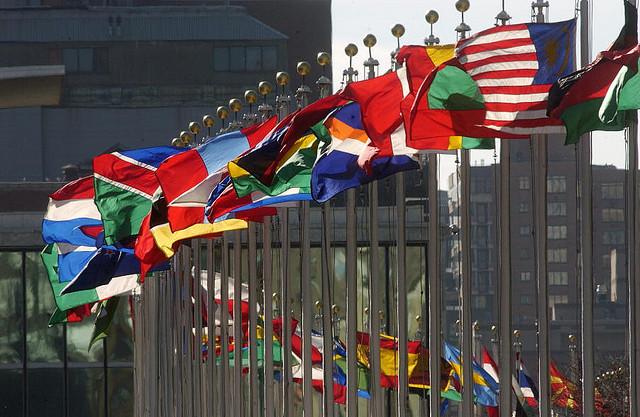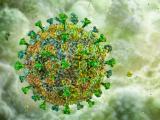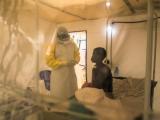The three Ebola-hit countries laid out their outbreak recovery plans today during the first day of a high-level donors meeting hosted by United Nations (UN) Secretary-General Ban Ki-moon, an event designed to help the countries fund their activities over the next 2 years.
National representatives are expected to spell out a $7.2 billion price tag for getting to zero cases and rebuilding their countries over the next 2 years. Earlier this week, World Health Organization (WHO) officials estimated that the three countries would need a total of $696.2 million to rebuild their health systems and provide services through the end of 2017.
In advance of the meeting, experts weighed in on some of the priorities for rebuilding health systems, considered a key to stamping out the disease in the three countries
Oxfam warns of broken funding promises
However, a report today from the humanitarian group Oxfam said rich countries have a weak record of delivering on their pledges, based on experiences from three other crises. The group's analysis of payouts from three other pledging conferences found that countries delivered only 47% of what they promised.
Oxfam based its conclusions on reviews of pledges for recovery efforts after crises in Lebanon, Haiti, and Gaza.
Gregory Adams, Oxfam's director of aid effectiveness, said in a statement that the Ebola epidemic isn't over yet, and the world can't afford to be complacent. "There is still a long way to go until these countries can begin to fully recover. Donors need to ensure their money gets to these people quickly, and that communities know how much is available and how it will be spent," he said.
The group said it hoped its stark review of the results of past recovery pledging jolts countries to honor their pledges and support Ebola recovery in a timely way. It added that the money is crucial for rebuilding health facilities, improving water and sanitation, and training more community health workers.
Experts outline Ebola recovery priorities
In a separate report, Oxfam today outlined what it sees as priorities for successful and sustainable community health systems in the Ebola-hit countries, giving specific recommendations for the pledging conference.
The top priority on the group's list is to build community engagement, which it says is now recognized as a critical component in reducing Ebola cases to zero. Other components are building the community health system from the ground up, developing community health worker programs, and strengthening community accountability.
In a commentary in Lancet Global Health today, two experts said that though there seems to be consensus that the countries need stronger health systems with surveillance capabilities, current gaps are so big that the countries will need to set priorities for how to rebuild their health systems. The authors are Ranu Dhillon, MD, senior technical adviser in the division of Global Health Equity at Brigham and Women's Hospital in Boston, and Robert Yates, MBA, a health economist at the Royal Institute for International Affairs in London.
A main priority is to address primary and community-level health systems that are structured to extend into remote areas. The authors said the countries need well-staffed and supported primary clinics, along with community health workers who can provide decentralized services, help with disease surveillance, and foster trust with local people.
The second priority they recommend is making essential drugs and health commodities freely available with government and donor budgets, Dhillon and Yates wrote. This would go a long way toward driving down disease burden and boost public confidence in the health system.
Three other goals include getting the countries caught up on preventive services, integrating surveillance with health systems, and strengthening management of health ministries and district health departments.
Health worker shortage could drive up maternal deaths
As countries and donors invest in the countries' health systems, an urgent need is to increase the number of health workers, many of whom got sick or died during the Ebola outbreak, experts from the World Bank said today in a separate Lancet Global Health report.
The team warned that disproportionate deaths from Ebola in health workers could lead to a spike in maternal deaths to levels the countries haven't seen in 20 years. They estimated that the health worker losses could lead to an additional 4.022 deaths in women each year across the three countries due to pregnancy and childbirth complications.
Their maternal mortality projections varied for each of the three countries, because Liberia had the highest proportion of healthcare worker deaths, followed by Sierra Leone and Guinea. For example, Liberia had only about 50 doctors before the Ebola outbreak began, and the disease wiped out 10% of its doctors and 8% of its nurses and midwives.To prevent the steep increase in maternal deaths, the authors said the countries need 240 doctors, nurses, and midwives to be hired immediately, a small fraction of the 43,565 health workers it would take to achieve essential health services spelled out in the Millennium Development Goals.
CDC's Ebola battle
The US Centers for Disease Control and Prevention (CDC) today released a multimedia report detailing the role of its experts in battling Ebola in West Africa. Along with a 56-page report that provides a detailed overview and photos from the CDC's work, the package includes a video presentation, an infographic on Ebola activity over the course of the epidemic, and items that spotlight contact tracing and border protection.
The report's first-person experiences range from contact tracers who helped train African responders in very remote areas, to infection control experts teaching villagers how to decontaminate their homes, to volunteers who served in clinical settings after taking a CDC-led personal protective equipment training course in Anniston, Ala.
The report also details the extensive involvement of CDC staffers in planning and staffing laboratories in the outbreak region, as well as experts' involvement in a host of border protection and communication activities.
In a press release today, the CDC said it sent more than 1,200 experts to West Africa, many of whom were deployed more than once and some of whom have volunteered to serve as long as cases are still being detected.
"We will never forget either those impacted by this terrible epidemic or the heroic public health professionals who responded," CDC Director Tom Frieden, MD, MPH, said in the statement.
Community Ebola knowledge
In other developments, a CDC epidemiology field team and its Liberian colleagues today reported the results of a survey on community attitudes about Ebola conducted in five Liberian counties last September and October. Their findings appear in Morbidity and Mortality Weekly Report (MMWR).
Two of the counties, Bong and Margibi, were hard hit by the disease.. Both saw cases early in the outbreak. The in-person interview survey included 609 respondents, with an average response rate of more than 90%.
The team found that overall awareness of Ebola was high, but the results revealed several concerning areas. In all of the counties, participants were less likely to recognize Ebola symptoms and to understand the transmission risk from asymptomatic people.
Results showed that people feared Ebola patients, treatment units, and survivors. The team said anxiety about survivors might have stemmed from the failure to include community acceptance in the initial messaging about the disease in Liberia. They concluded that the results could help responders target ongoing messages about Ebola.
See also:
Jul 9 Oxfam press release
Jul 9 Oxfam report
UN International Ebola Recovery Conference Web site
Jul 6 WHO statement on health system recovery from Ebola
Jul 8 Lancet Glob Health Ebola health priority abstract
Jul 8 World Bank press release
Jul 8 Lancet Glob Health maternal mortality abstract
Jul 9 CDC press release
Jul 10 MMWR report

















